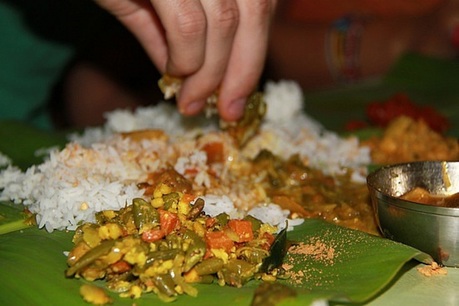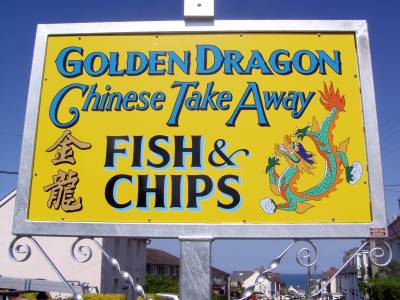Globalisation and Food Cultures
Globalisation has been changing the food we eat and the ways we eat those foods.
A food culture is more than what you eat; it is also about how you eat your food and what that food means to you. On the global stage, some food cultures have become dominant. For example, the hegemony of Italian coffee culture means that many English-speakers will order a latte rather than ask for a milky coffee. In contrast, some foods have struggled to globalise and remain firmly rooted in local cultures - snakes, snails and spiders are all part of somebodies food culture.
Globalisation means that food cultures are on the move; they are being displaced from their roots and are often forming new hybrid cultures when they interact with other food traditions. Here we look at the impact of cultural diffusion and corporate glocalisation.
A food culture is more than what you eat; it is also about how you eat your food and what that food means to you. On the global stage, some food cultures have become dominant. For example, the hegemony of Italian coffee culture means that many English-speakers will order a latte rather than ask for a milky coffee. In contrast, some foods have struggled to globalise and remain firmly rooted in local cultures - snakes, snails and spiders are all part of somebodies food culture.
Globalisation means that food cultures are on the move; they are being displaced from their roots and are often forming new hybrid cultures when they interact with other food traditions. Here we look at the impact of cultural diffusion and corporate glocalisation.
|
Chopsticks, fingers or knife and fork - your choice might say something about your food culture and the places where you eat in the world.
Don't assume that British and American people have the same food culture. Either side of the Atlantic, there are important cultural differences regarding the 'correct' etiquette for using eating utensils. Some food cultures are associated with religion. Hindu's regard eating with the hand as sacred whilst some people in other food cultures might consider this to be profane. ” eating food with your hands feeds not only the body but also the mind and the spirit”. Indian saying. |
Cultural diffusion
Jamie Oliver is perceptive when it comes to spotting globalisation. In his 2011 TV series, Jamie's Great Britain, he discovers how traditional meals that are thought of as being 'British' are actually displaced foods that have indigenised to become local foods. This process of indigenisation suggests that cultural diffusion is a complex process.
|
Jamie's Great Britain provides numerous examples of cultural diffusion. He shows how food cultures have been influenced by the slave trade, the British Empire and the ethnoscapes that are associated with these global interactions. |
'British' Fish and Chips
Pescado Frito
Fish and chips, for some the most quintessentially British dish, was first introduced into Britain during the 16th century by Jewish immigrants who were forced to leave Portugal and Spain. In the 1860s, the first fish and chip shop in London may have been Jewish owned, but today, many traditional 'chippies' are now owned by Chinese families. Another recent cultural twist means that chip shop curry sauce has become a popular addition to this supposedly 'British' institution.
Fish and chips, for some the most quintessentially British dish, was first introduced into Britain during the 16th century by Jewish immigrants who were forced to leave Portugal and Spain. In the 1860s, the first fish and chip shop in London may have been Jewish owned, but today, many traditional 'chippies' are now owned by Chinese families. Another recent cultural twist means that chip shop curry sauce has become a popular addition to this supposedly 'British' institution.
East eats West: the globalisation of Chinese food
|
Ken Hom's trip to Beijing shows us Chinese food that is being globalised. Whilst the food may still be Chinese, the style of presentation and mode of eating reflects western influences such as French nouvelle cuisine.
"Thirty years ago, all the food was put in a bowl creating only one good flavour. ... we want to try different flavours and the dish to look beautiful and artistic". For the wealthy elite in Beijing, global interactions are changing their food culture. Cultural diffusion is resulting in a new syncretic or hybrid Chinese food culture that contains western ingredients. |
|
|
Forbidden Starbucks:
In 2007 Starbucks closed its coffee shop in the Forbidden City in Beijing. Protestors argued that the coffee shop was degrading local Chinese culture at this Unesco World Heritage site. Geographers sometimes think of the global and the local as two sides of the same coin. Globalisation and localisation often have to battle it out for territory. Although the global is a powerful force, sometimes it is the local that wins, as in the case of Starbucks withdrawing from the Forbidden City. |
Globalisation of Food: key terms
|
Global food culture: food cultures that are displaced from their origins and are commonly found around the world. EG: Pizza Corporate Glocalisation of food: where global TNCs adapt their food products to complement local food cultures. EG: Teriyaki burger Cultural diffusion of food cultures: the spreading of a food culture so that it becomes displaced from its origins. The diffusion of food cultures can add to food landscapes in two ways:
|
If you think McDonald's is the same the world over, think again.
|
Corporate Glocalisation - the McDonalds way
|
People who have travelled a bit will tell you that not all branches of McDonald's are the same. This is true. There maybe too many burger joints in too many countries, but they are popular because they have been localised to suit local food cultures.
Many Hindus avoid eating beef, so India might at first seem to be a strange place to open a chain of shops selling beef burgers. Enter the Chicken Maharaja Mac. It sounds Indian, it isn't beef but it is what millions of people in India would consider to be their McDonald's. Corporate glocalisation is controversial, since it has been accused of manipulating or defiling local food cultures. For many geographers, glocalisation is a tool that enables transnational corporations (TNCs) to maintain global dominance of the food industry. |
|




